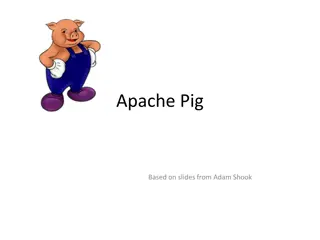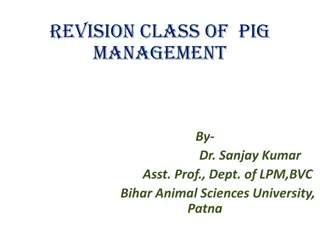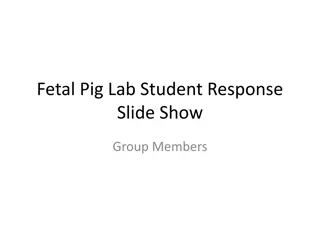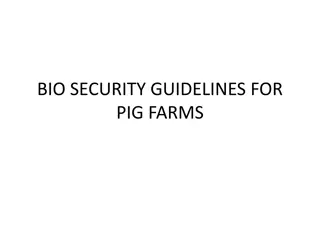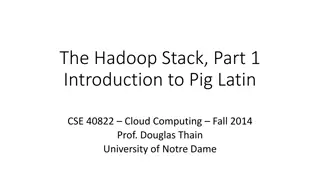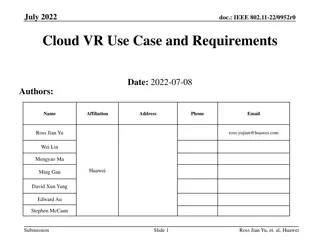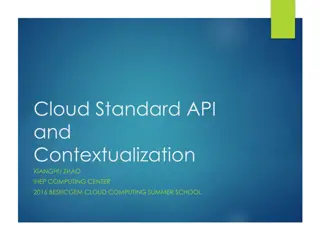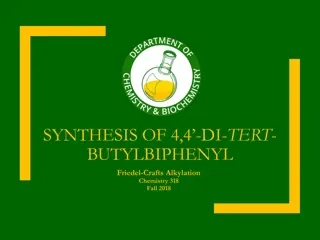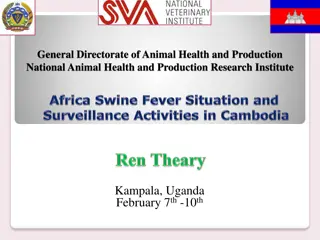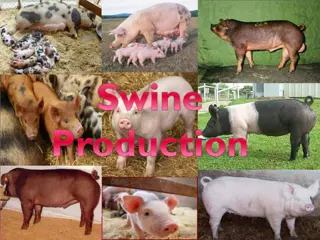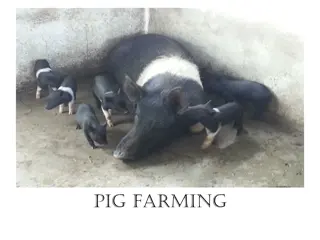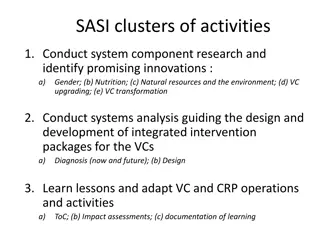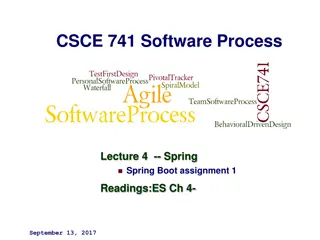Introduction to Cloud Computing Lab II: Pig 2019 Spring
This document provides a detailed overview of the Pig component in Cloud Computing Lab II. From relational operators to diagnostic operators, user-defined functions, environment commands, expressions, data handling techniques, and splitting data processes, the content covers various aspects of Pig programming. Additionally, it delves into handling bad data scenarios, demonstrating how to filter, count, and manipulate data effectively within the Pig environment.
Download Presentation

Please find below an Image/Link to download the presentation.
The content on the website is provided AS IS for your information and personal use only. It may not be sold, licensed, or shared on other websites without obtaining consent from the author. Download presentation by click this link. If you encounter any issues during the download, it is possible that the publisher has removed the file from their server.
E N D
Presentation Transcript
Introduction to Cloud Computing Lab II: Pig 2019 spring
diagnostic operators and UserDefinedFunction statements
Handling bad data (1) $ wget pdc19.csie.ncu.edu.tw/lab2/bad.txt $ hadoop fs -put bad.txt /user/a000000000/bad.txt $ pig
Handling bad data (2) grunt> records = load '/user/a000000000/bad.txt' using PigStorage(' ') as (year:int, temp:int, quality:int); grunt> dump records; Null data
Handling bad data (3) Get all bad data: grunt> badrec= FILTER records BY temp is null OR quality is null; grunt> DUMP badrec; Count all bad data: grunt> badgroup= GROUP badrec ALL; grunt> counter = FOREACH badgroup GENERATE group, COUNT(badrec); grunt> DUMP counter;
Splitting Data grunt> records = LOAD '/user/a000000000/bad.txt' using PigStorage(' ') AS (year:int, temp:int, quality:chararray); grunt> SPLIT records INTO good IF temp is not null AND quality is not null, bad IF temp is null OR quality is null; grunt> SPLIT good INTO newdata IF quality matches '[0123456789]', olddata IF not quality matches '[0123456789]'; grunt> DUMP good; grunt> DUMP bad; grunt> DUMP newdata; grunt> DUMP olddata; bad Use the Java format for regular expressions. newdata records good olddata
Storing the Results grunt> STORE newdata INTO '/user/a000000000/newdata' USING PigStorage('\t'); grunt> quit $ hadoop fs -lsr newdata $ hadoop fs -get newdata/part-m-00000 olddata.txt $ more newdata.txt
Practice 2 1. 2. Write a pig latin script: Load pbad.txt, remove bad data. Split good data into new data if quality matches [0123456789] , and old data if quality does not match [0123456789] . Convert temperature in degrees Celsius ( C) to in degrees Fahrenheit ( F) Use dump to show the maximum temperature with decimal fraction for each year in the old data 3. 4.


